SAM GILLIAM / Existed Existing
Pace Gallery, New York
November 6 to Dec 19, 2020
Sam Gilliam’s inaugural exhibition with Pace Gallery, Existed Existing debuts new works and artist-led installations that reflect the culmination of his six-decade-long career with color.
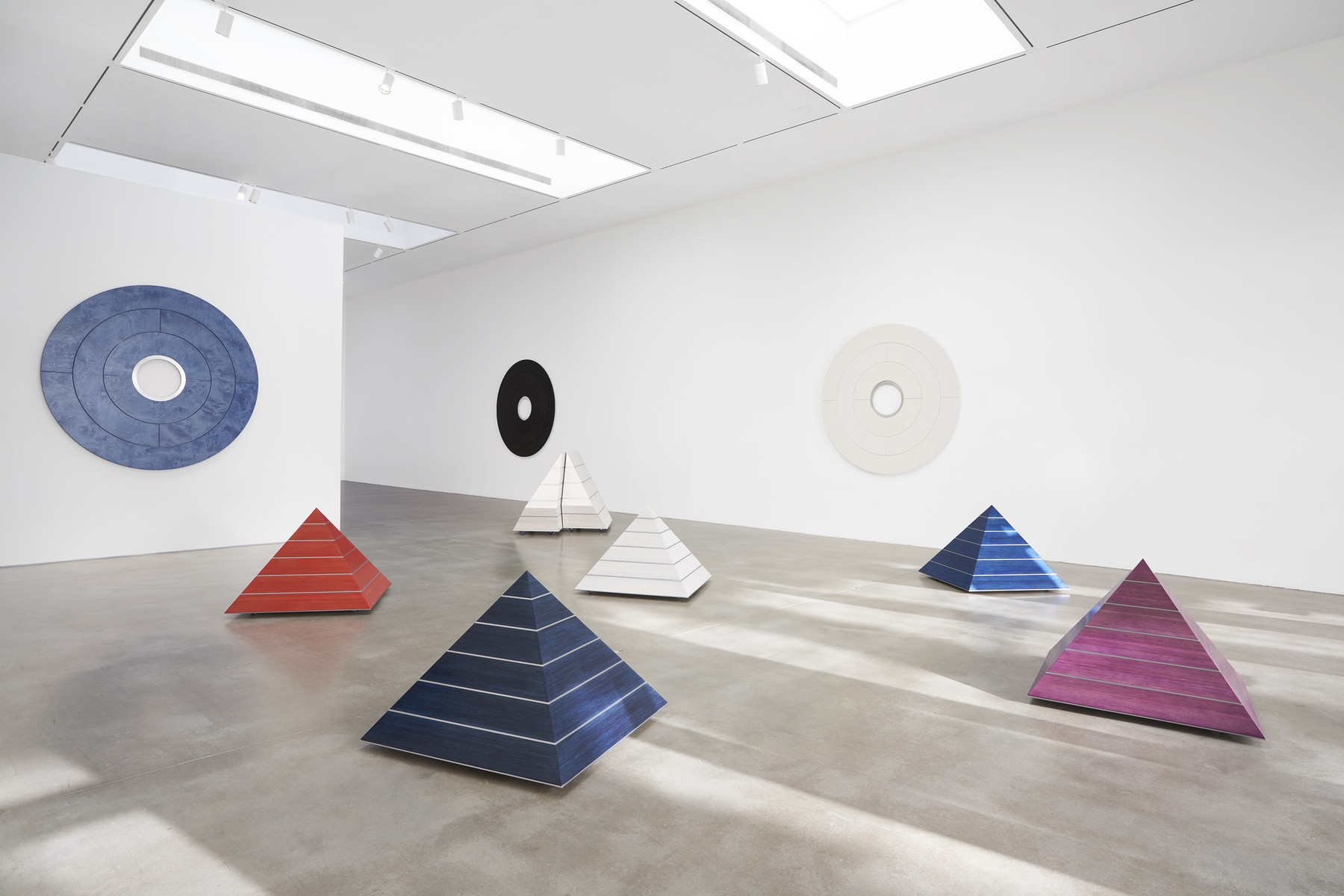
SAM GILLIAM / Existed Existing - Exhibition View, Courtesy of Pace Gallery.The exhibition features three new bodies of work that include large-scale paintings, some titled as tributes to influential Black contemporary and historical figures; a series of geometric color-drenched wood objects; and monochromatic paintings on Japanese washi paper. Accompanying Existed Existing is a fully illustrated monograph that includes a new interview between the artist and curator Hans Ulrich Obrist, as well as commissioned essays by art historian and curator Courtney J. Martin and scholar and poet Fred Moten.
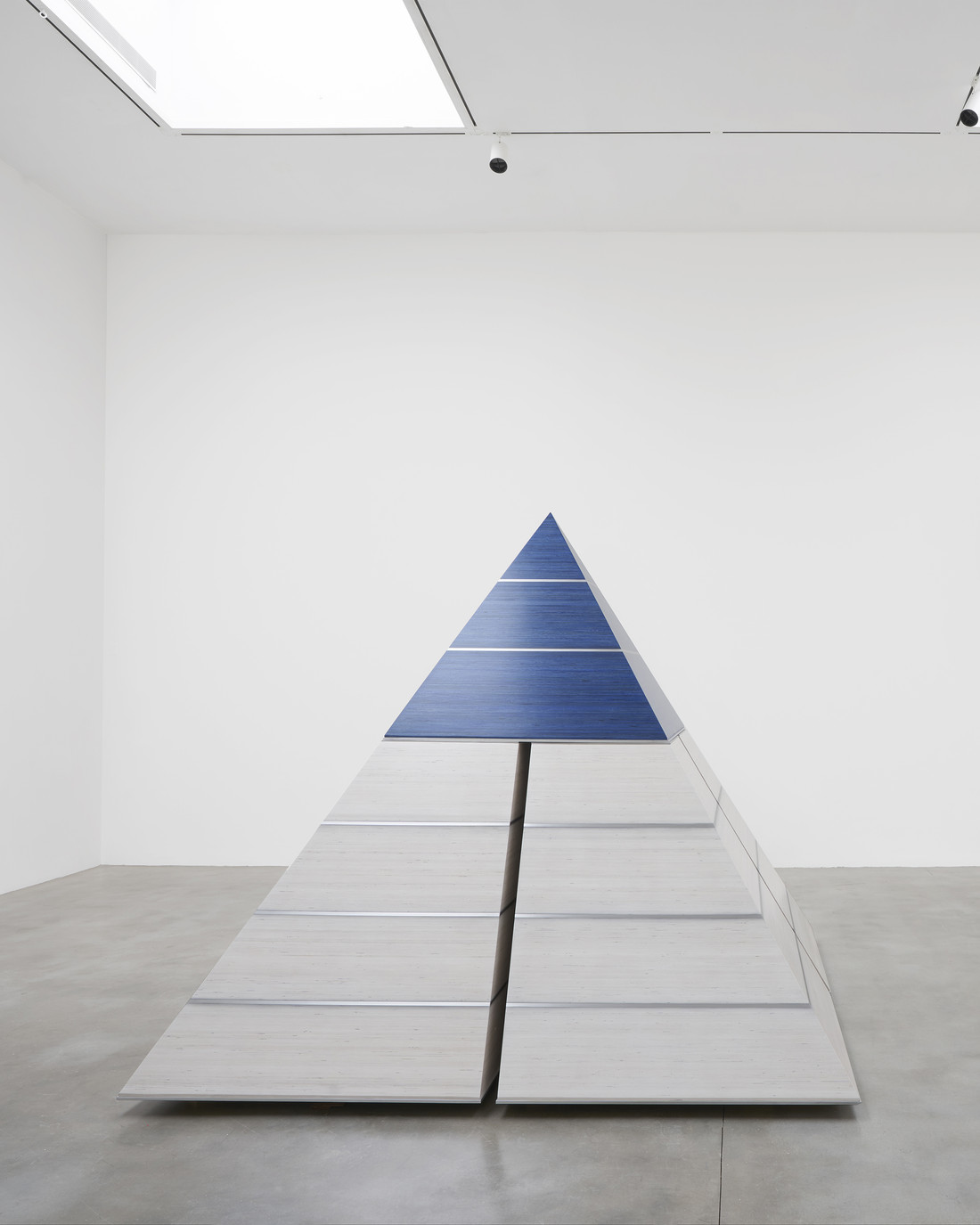
Sam Gilliam - Pyramid 2020, wood, stain, lacquer, aluminum, 279.4 cm × 309.9 cm × 309.9 cm © Sam Gilliam / Artists Rights Society (ARS), New York - Courtesy of Pace GalleryGilliam’s new sculptural works take the form of geometric objects—pyramids, parallelograms, and circles made from stacked and stained plywood and aluminum. These new sculptures developed following Gilliam’s extended stay in Basel, Switzerland, for the installation of his exhibition at the Kunstmuseum Basel in 2018, where he noticed that the city’s population had grown more international through an influx of immigrants, primarily from Africa. Inspired by this urban change and African influence, Gilliam returned to his studio and began to revisit the elemental forms of ancient African architecture.
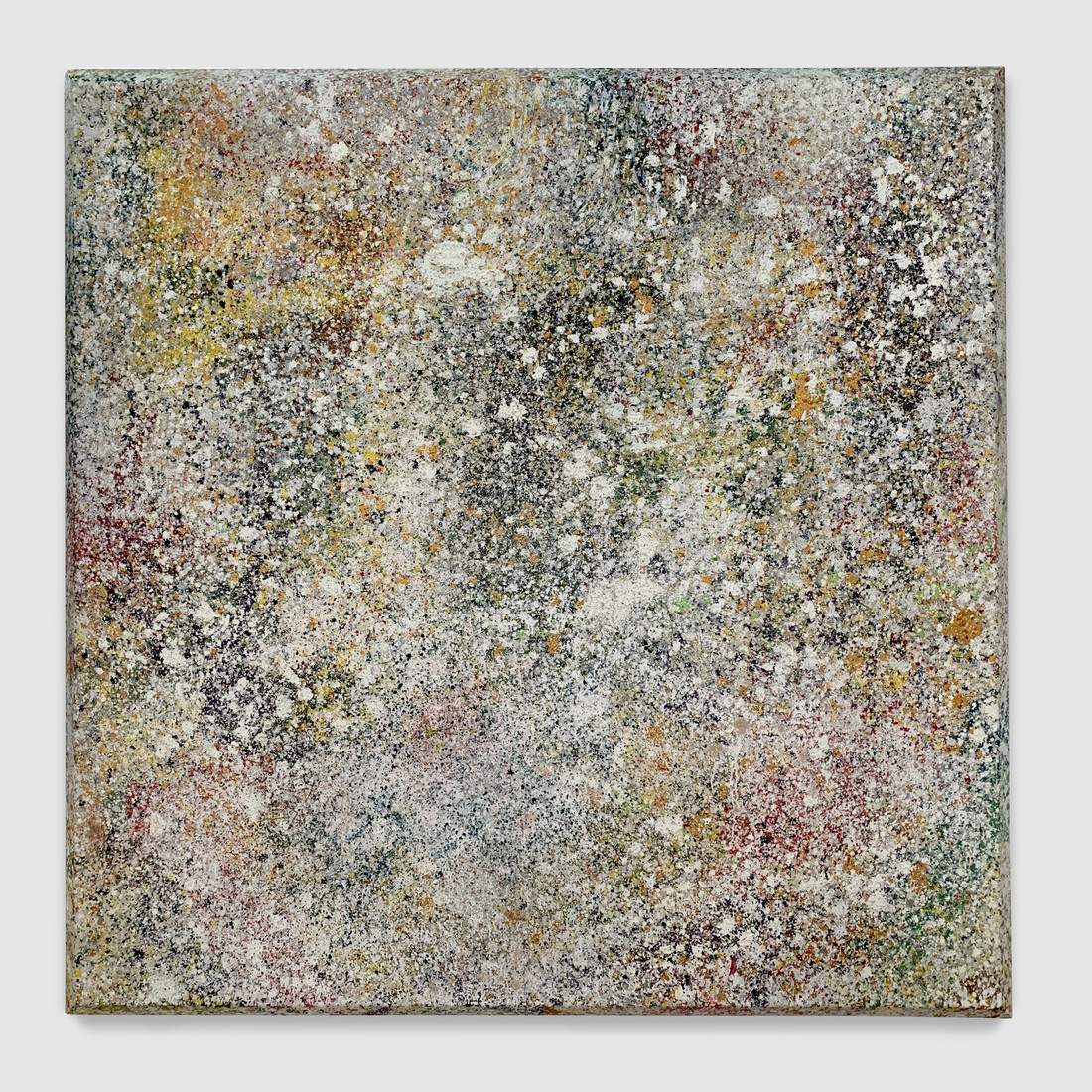
Sam Gilliam - The Mississippi
"Shake Rag," 2020, acrylic on canvas, 243.8 cm × 243.8 cm. © 2020 Sam Gilliam / Artists Rights Society (ARS), New York; Courtesy of Pace GalleryAt the center of the exhibition is a series of new large-scale paintings, measuring from six-by-eight feet to eight-by-twenty feet, that further meditate on the physicality of color. Several of these works pay homage to Gilliam’s Black heroes, from singer-songwriter Beyoncé and tennis player Serena Williams to Senator John Lewis, the late civil rights leader who passed away this year. Densely layered and mixed with sawdust and other detritus from the studio, Gilliam flings, spatters, and throws paint to create fields of color interrupted by impressions of the artist’s hand, the mark of a palette knife, or the traces of a garden rake dragged across the wet surface. Continuing his series of signature beveled-edge paintings, which began in the 1960s, these canvases at first appear to emerge from the wall toward the viewer. The density of the paintings at first disguises the depth of the canvas’s bevel, giving the illusion of flatness. As if offering an infinite space in their depth, each painting seems to oscillate between liquid and solid when viewed from different distances.
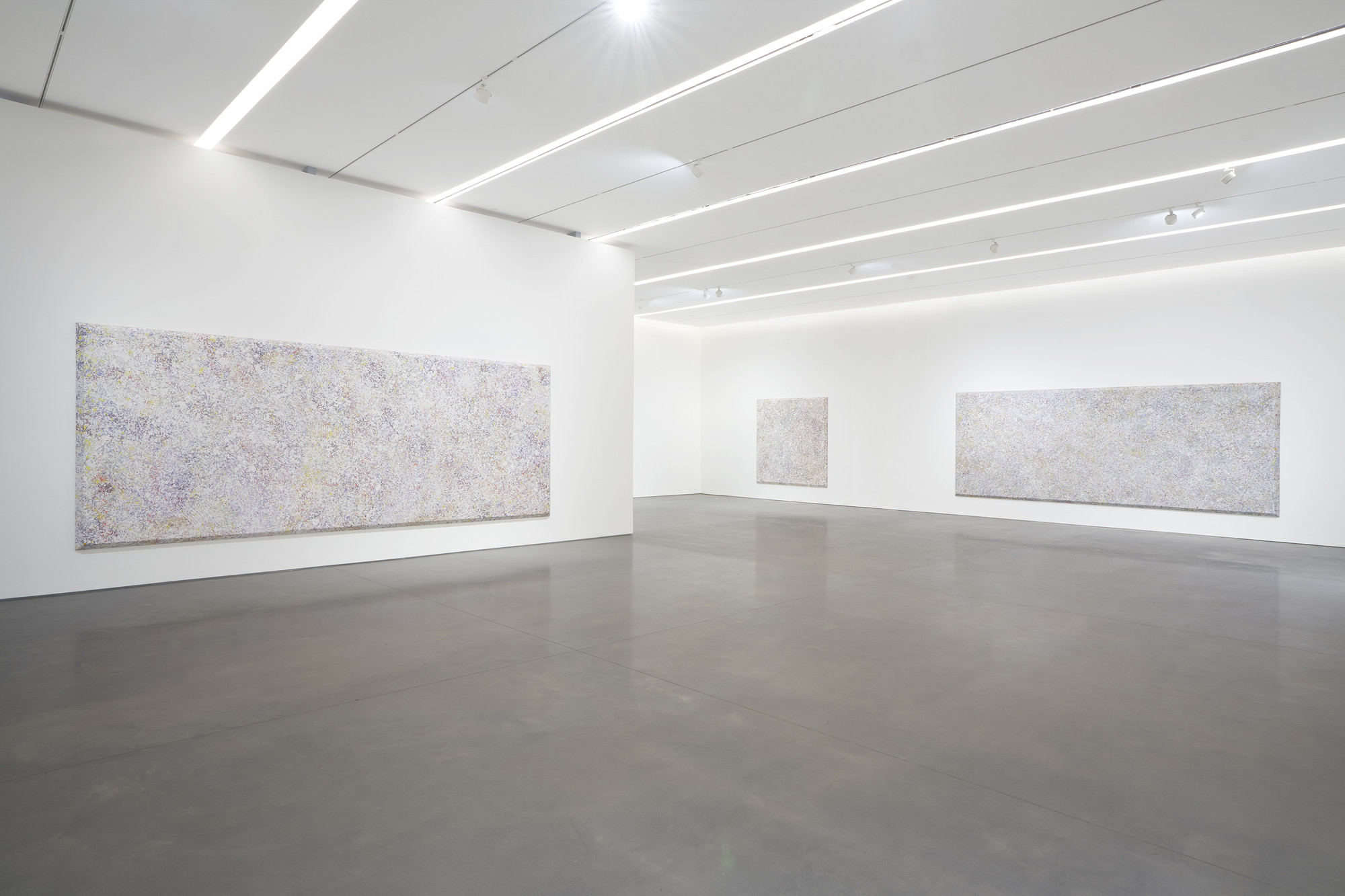
Installation view, Sam Gilliam: Existed Existing, Pace Gallery, New York, Nov 6 – Dec 19, 2020 © Sam Gilliam / Artists Rights Society (ARS), New York; Courtesy fo Pace GalleryComplementing Gilliam’s new large-scale paintings and sculptural structures is a series of monochromatic paintings on traditional Japanese washi paper, handmade from the inner bark of specific trees and and plants. To make these works, Gilliam drenches the paper repeatedly in applications of rich, monochromatic color. The intensity of the saturation is such that the painting can no longer be seen as paper holding color but becomes color in and of itself.
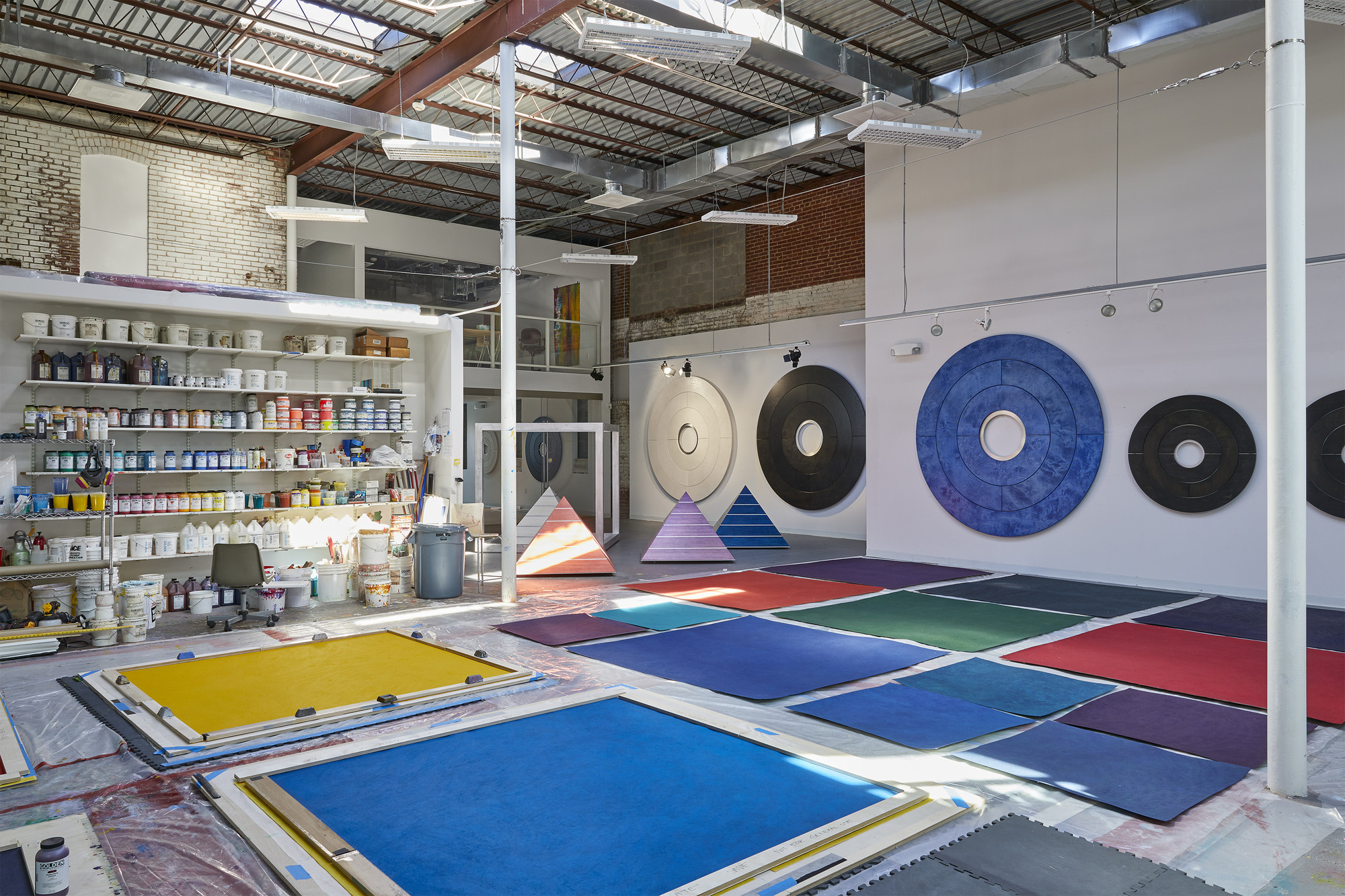
York; Courtesy of Pace GalleryGilliam’s three new bodies of work are unified by a performative sensibility: the relationships between music, art, and dance that are fundamental to his practice. Music has always been a grounding presence in the artist’s life and a strong influence on his creative output. Growing up amid the rich musical culture of Tupelo, Mississippi, Gilliam was exposed to Billie Holiday and Muddy Waters at a young age and most of his family members were musical, including Gilliam himself, who sang and played the harmonica. He credits jazz saxophonist John Coltrane for teaching him how to paint: “It’s time that matters: listening and realizing what happened with the music, my experience of sound established these references in painting.” For Existed Existing, Gilliam has carefully choreographed the placement of each work; relationships emerge in the architectural space created by the sculptural elements, unfolding rhythmically as viewer moves through the installation.

